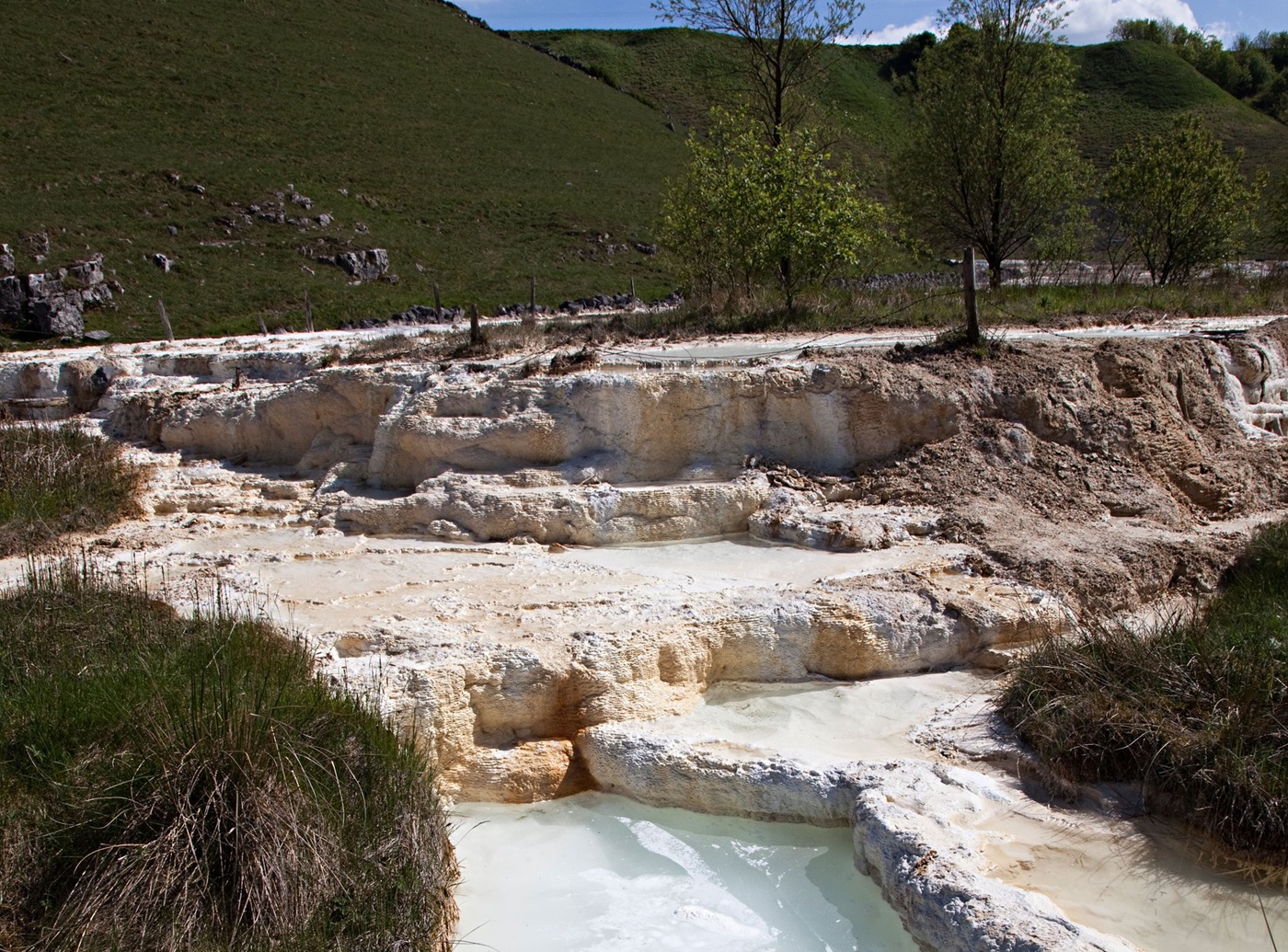One of Turkey’s most impressive geological wonders is Pamukkale (meaning “cotton castle”), renowned for its sinter terraced formations created by calcite-rich springs.
In an unusual twist of Britain’s industrial past, similar tufa terrace formations can be found in the White Peak of Derbyshire at a place known as Harpur Hill, south of Buxton.
While the formations at Pamukkale have taken at least 55,000 years to reach their present size, the terraces at Harpur Hill formed in the last two centuries as a result of lime workings at Harpur Hill and the adjacent Grin Low area.
The region has a long history of limestone quarrying and lime burning, producing quicklime since the mid-1600s. Quicklime, or calcium oxide, is a chemical compound that has been widely utilised as a construction material in ancient times and possibly as a chemical component in Greek fire.
During the industrial revolution, quicklime production increased in tandem with the growing iron and steel industries, as well as the increased building activity where it was used to make lime mortar.

At Harpur Hill, large scale production was developed in the 1830’s for the agricultural, building and chemical industries, which continued until the early 1950’s.
The lime production process was notably inefficient, generating significant waste that was discarded at various sites around Harpur Hill, with one of the larger waste tips formed by ‘tumble tipping’ down the slope of the Brook Bottom valley near a bank of lime kilns.
Because the waste contains calcined limestone, it reacts with water and hydrates the burnt lime to form a calcium hydroxide-dominated leachate. When the leachate comes in contact with atmospheric carbon dioxide and bicarbonate water, this leads to calcium carbonate forming the soft tufa terrace deposits on the valley bottom over a length of over 200 metres.
Today, this man-made wonder can be partially accessed from the footpath between Grin Low Road and Countess Cliff Farm, however, a closer inspection off the footpath requires permission from the landowner.
Header Image Credit : Chris Howes – Alamy





